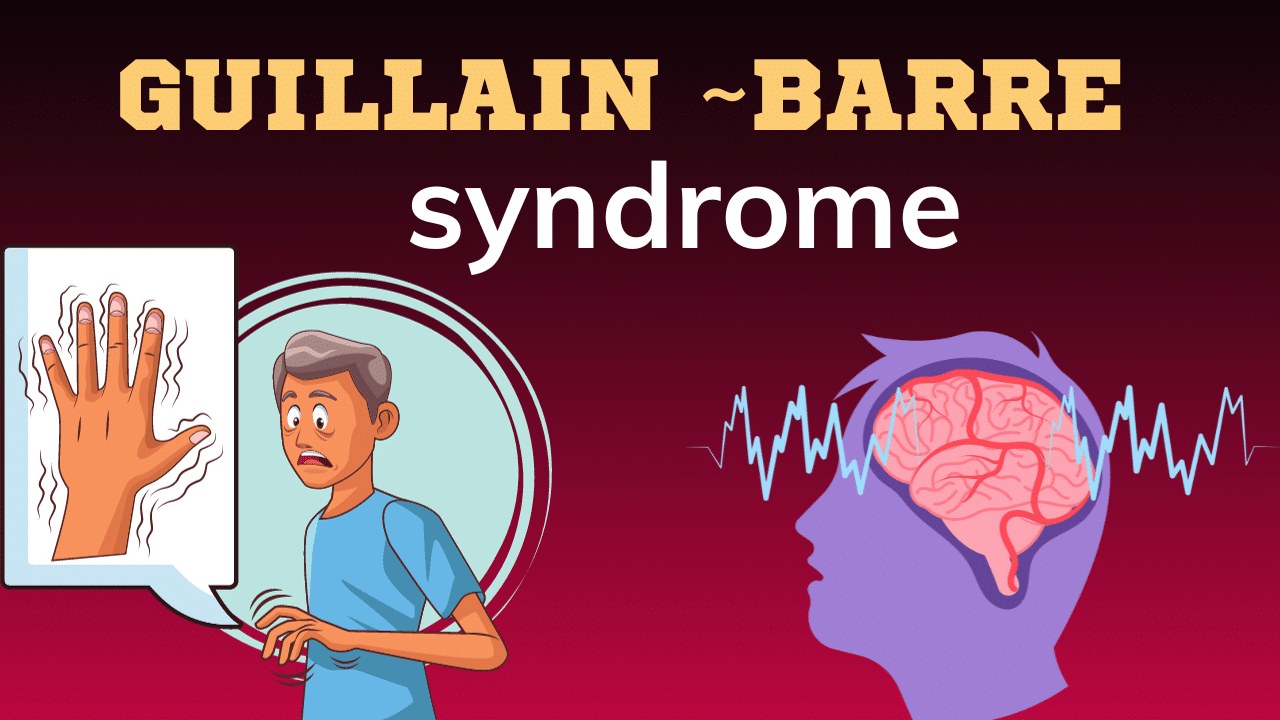Introduction – Guillain-Barré Syndrome
Guillain-Barré Syndrome (GBS) is a rare but potentially life-threatening neurological disorder which affects the peripheral nervous system.
Named after the French physicians Georges Guillain and Jean Barré, who first described the condition in 1916, GBS is characterize by a sudden onset of muscle weakness or paralysis that can progress rapidly.
This article aims to provide a comprehensive overview of Guillain-Barré Syndrome, including its causes, symptoms, diagnosis, treatment, and prognosis.
Understanding the Peripheral Nervous System
Before delving into GBS, it’s essential to understand the peripheral nervous system (PNS).
The PNS consists of all the nerves outside the brain and spinal cord, responsible for transmitting signals between the central nervous system (CNS) and the rest of the body.
These nerves control muscle movement, sensory perception, and autonomic functions such as heart rate and digestion.
What is Guillain-Barré Syndrome?
Guillain-Barré Syndrome is an autoimmune disorder that occurs when the body’s immune system mistakenly attacks the peripheral nerves.
This immune response damages the protective covering of nerve fibers, called myelin, and can even damage the nerves themselves.
As a result, the transmission of signals between the brain, spinal cord, and the rest of the body is disrupt, leading to muscle weakness and other neurological symptoms.
Symptoms of Guillain-Barré Syndrome
The symptoms of Guillain-Barré Syndrome can vary widely from person to person but typically include:
- Muscle Weakness: GBS often begins with weakness or tingling sensations in the legs, which can spread to the arms and upper body. This weakness can range from mild to severe.
- Loss of Reflexes: Many individuals with GBS experience a loss of reflexes, such as the knee-jerk reflex, due to nerve damage.
- Tingling and Numbness: Some people may experience tingling or numbness in the affected areas.
- Pain: GBS can be associated with muscle pain, often described as aching or cramping.
- Coordination Problems: As the condition progresses, individuals may have difficulty with coordination and walking.
- Paralysis: In severe cases, GBS can lead to complete paralysis, which can affect the muscles involved in breathing and other vital functions.
- Autonomic Dysfunction: GBS can also affect autonomic functions, leading to problems like fluctuations in blood pressure, heart rate, and digestion.
Causes of Guillain-Barré Syndrome
The exact cause of Guillain-Barré Syndrome is not fully understood, but it is often triggered by infections, including:
- Campylobacter Infection: This bacterium is commonly associate with food poisoning and is one of the most common triggers for GBS.
- Cytomegalovirus (CMV): A member of the herpesvirus family, CMV can lead to GBS in some cases.
- Epstein-Barr Virus (EBV): The virus that causes mononucleosis has also been link to GBS.
- Zika Virus: The Zika virus outbreak in 2015-2016 raised concerns as it was associate with an increased incidence of GBS.
- Influenza: Some strains of the influenza virus have been link to GBS.
It’s important to note that while these infections can trigger GBS, most people who contract these infections do not develop the syndrome.
Diagnosis of Guillain-Barré Syndrome
Diagnosing of GBS may be challenging, as its symptoms can mimic those of other neurological disorders.
A combination of clinical evaluation and diagnostic tests is typically use to confirm the condition. These tests may include:
- Nerve Conduction Studies (NCS): NCS can assess how well electrical impulses travel through the nerves, helping to identify nerve damage.
- Electromyography (EMG): EMG measures the electrical activity in muscles, aiding in the diagnosis of GBS.
- Spinal Tap (Lumbar Puncture): This procedure involves collecting a sample of cerebrospinal fluid to check for elevated levels of protein, a common sign of GBS.
- MRI (Magnetic Resonance Imaging): While not a definitive test for GBS, an MRI can help rule out other conditions with similar symptoms.
- Blood Tests: Blood tests will be conduct to identify specific antibodies or markers associated with GBS.
Treatment of Guillain-Barré Syndrome
GBS requires prompt medical attention, and treatment typically involves the following:
- Intravenous Immunoglobulin (IVIG): IVIG is a therapy that involves infusing high doses of antibodies into the bloodstream to reduce the immune system’s attack on the nerves.
- Plasma Exchange (Plasmapheresis): This procedure filters harmful antibodies from the blood, helping to alleviate symptoms.
- Supportive Care: Patients with severe GBS may require hospitalization and may need assistance with breathing through mechanical ventilation. Physical therapy, occupational therapy, and rehabilitation play crucial roles in recovery.
Prognosis and Recovery of Guillain-Barré Syndrome
The prognosis for Guillain-Barré Syndrome varies from person to person.
While some individuals may experience a full recovery, others may have lasting neurological deficits.
The recovery process can be slow and may take several Days depending on patients condition.
Complications of GBS can include muscle weakness, fatigue, pain, and residual sensory deficits.
However, with appropriate medical care and rehabilitation, many individuals can regain significant function and lead fulfilling lives.
Conclusion
Guillain-Barré Syndrome is a rare neurological disorder that can have a profound impact on those affected.
While it can be a frightening and challenging experience, early diagnosis and prompt treatment can significantly improve outcomes.
Ongoing research continues to shed light on the causes and potential treatments for GBS, offering hope for a better understanding and management of this complex condition.
If you or someone you know experiences symptoms suggestive of GBS, seeking medical attention is crucial for a timely diagnosis and appropriate care.

Excellent, what a webpage it is! This blog provides valuable facts to us, keep it up.
Thankyou keep share the link and help me in spreading awareness